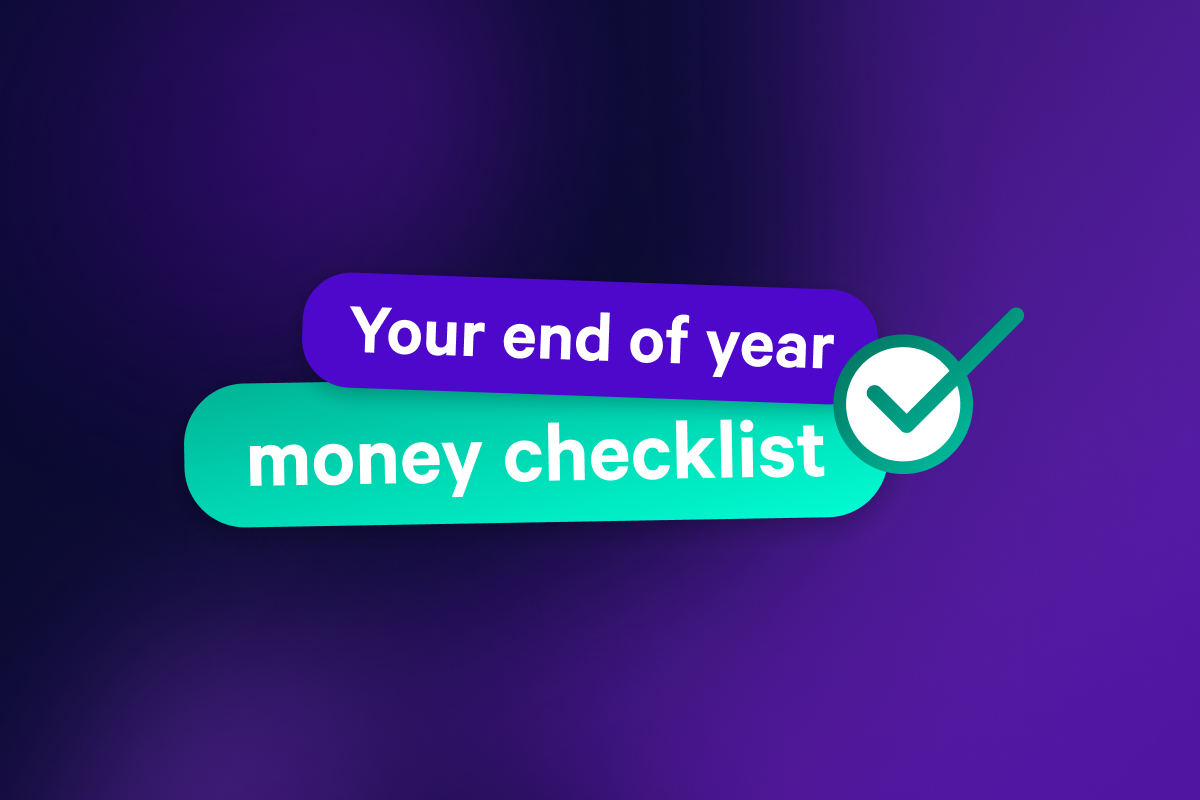Another year has flown by, and what a year it’s been.
We saw the return of big live events like The Fringe and Glastonbury, as well as some unlikely reunions with ABBA going back on tour (kind of) and the comeback of Bennifer. People hopped aboard the Wordle craze, the Lionesses brought football home and Elon Musk bought Twitter, in an unexpected turn of events.
But 2022 was filled with unexpected financial news, too. The energy crisis saw bills go up, skyrocketing inflation saw mortgages go up, and the Autumn Statement saw taxes go up, resulting in significant money anxiety for many of us.
To help get off on the right financial foot in 2023, we’ve put together an end-of-year money checklist that will help you analyse your spending, investing and saving habits.
Number 1: Review your budget
First off on the list, it’s time to check in on how you’ve spent your money. If you had a budget, did you stick to it? If not, why not?
Remember, this isn’t an excuse to be hard on yourself! Sticking to a budget can be incredibly difficult when circumstances are constantly changing. But by analysing where you might have overspent, you can make more positive changes in the new year. If you’ve consistently overspent, you can also update your budget to ensure you’re allocating the right amount to different areas.
Crunching numbers can be a laborious process, which is why Plum aims to simplify budgeting for you. For instance, with its smart budgeting tools, it will continuously check if you’re overspending on your bills and whether there’s a cheaper alternative. Plus, you can use the Plum Card to set yourself a spending allowance to keep overspending to a minimum.
Number 2: Start planning for large expenses
If you have something coming up in 2023 that requires a big chunk of money, now’s the time to start planning how you’re going to pay for it. For instance, if you want to renovate your kitchen in the summer, sit down and calculate how much money it might take. Then, start putting aside cash every day/week/month to help you hit your target.
By planning now and starting early, you can build up a pot over time, taking some financial pressure off when summer rolls around and your builders start asking for payment.
Number 3: Make one financial New Year resolution
We know that New Year resolutions don’t always work out… but making just one personal finance goal for the new year can really keep you motivated!
Examples of New Year Resolutions (financial edition) include:
- Opening a Stocks & Shares ISA and start investing £X every month*
- Paying off your credit card debt
- Switching to a cheaper broadband provider
- Building up an emergency fund worth three months’ wages
- Contributing £120 to your savings account each month for your dream holiday
Whatever you choose, make sure your resolution is both realistic and specific to keep you on track.
Read more about how to set good financial goals in this article.
*Capital at risk if you invest.
Number 4: Review your investments
If you’re investing for the long term, it’s a good idea to continuously monitor your investments, and the end of the year is a great time to check in on how your portfolio’s looking. Consider which assets you’re investing in and whether there’s room for diversification.
By diversifying your portfolio, you can spread your risk. So, if the value of some investments goes down, it will be counteracted by other investments that have increased in value.
Read more about diversifying your investment portfolio here.
If you haven’t invested in the stock market yet, 2023 might just be your year. Consider your budget and risk appetite before using an app like Plum to invest in the world’s top brands, commission-free*.
Remember, your capital is at risk if you choose to invest, and your investments can go down as well as up.
*Other fees apply.
Number 5: Check in on your pension pot
If you’re reading this and you’re in your 20s or 30s, you might be tempted to skip this step seeing as retirement will be years off. But by reviewing your retirement plan and pension now, you can take control of it and start building a financially secure future.
Here are three questions to ask yourself:
- How much are you currently contributing to your pension?
- Is it enough?
- Could you have a lost pension out there?
If you think your pension pot is looking a bit meagre, you can consider opening a Self-Invested Personal Pension (SIPP) to top up your workplace pension. But one step at a time…
To help take control of your finances in 2023, why not give Plum a go today? It’s free to use, and we’ve got a range of subscription plans if you fancy trying out even more investing, saving and money management tools.
Download PlumPlease remember that your capital is at risk if you invest. You shouldn’t invest in or deal in any financial product unless you fully understand it and the inherent risks. When you automate and invest, you should be satisfied your choices are suitable in light of your circumstances and position.
The information contained in this article is for general guidance only and is not intended to constitute investment advice or any other advice or recommendation.

